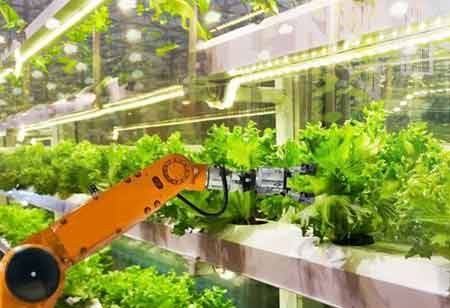

Thank you for Subscribing to Food Business Review Weekly Brief

Management of cold storage warehouses requires a high level of expertise. It demands in-depth industry expertise as well as the capacity to utilize resources efficiently.
Management of cold storage warehouses requires a high level of expertise. It demands in-depth industry expertise as well as the capacity to utilize resources efficiently. Effective managers of cold storage warehouses are fully aware of their needs for frozen products. They continuously address pressing problems that occur when managing perishable foods. Key frozen food and cold storage warehouse management challenges: - Time Management and Compliance Management of cold storage warehouses requires a high level of expertise. It demands in-depth industry expertise as well as the capacity to utilize resources efficiently. Effective managers of cold storage warehouses are fully aware of their needs for frozen products. Competent managers of cold storage facilities are in charge of monitoring issues including the safety of the cold storage freezer equipment and cold storage freezer times. Facilities managers must ensure that their staff members are appropriately taught, motivated, and compensated in order to ensure their safety. - Protecting Food Products Working in the frozen food sector, it is important to be aware that different goods need different temperatures to prevent spoilage. To maximize the lifespan of the items, it needs to control and manage the temperature and humidity levels in the warehouse. Traditional temperature monitoring systems are entirely reliant on human skill, which can be difficult and dangerous. If temperature or humidity changes, someone must be on-site to oversee the entire system and make the necessary adjustments. - Requirements for Accurate Product Tracing It is required to have up-to-date location data on the goods that pass through the warehouse that can identify the affected goods when there are abrupt or unanticipated temperature changes. Finding these products wouldn't be possible without precise traceability. Perishable goods like fresh fruit require much more care and regulation of environmental variables like humidity and carbon dioxide. By consistently using accurate and exact documentation, one can overcome this obstacle and achieve proper traceability for all of the products and their diverse requirements. - Labeling of Racks and Individual Products It is important to have barcode labels. They establish a connection between every tangible item in the inventory and the computer systems that keep an eye on receiving, storing, retrieving, and sending. One overlooked or misplaced label could result in faulty or completely damaged cargo. In order to run a cold storage warehouse effectively, freeze-grade labels that are suitable for each product and circumstance are essential since they can form a solid, long-lasting bond on common rack services. No matter what the everyday activities require, it can count on them to stay because the staff may use them in temperatures as cold as -20 degrees Fahrenheit. Frozen Food and Cold Storage Warehouse Management Best Practices Organizing and executing activities within a cold storage facility is all about information management and systems application. It’s tough to keep up with tasks, let alone stay ahead on new ways of doing business, but those with the right practices know exactly how to manage their frozen food warehouse with little to no trouble. - Develop a contingency plan There could be a variety of management issues with cold storage warehouses, but that does not imply that one must wait for calamity to occur. Instead, one should always be coming up with contingency plans for every issue that can arise at any stage of the process. Users never know when one of the refrigeration units or a truck in use will quit working. One must ensure that the carrier or 3PL is fully equipped to react appropriately and prevent loss. - Avoid Delays by Training and Fostering Relationships In order to prevent damage to the goods, it's important to keep the time it takes for a product to travel through the system to a minimum. Making sure that everyone in the chain of command is aware of the best practices for frozen food warehouse management is one of the most important aspects of developing an effective process. There are many important tasks associated with cold chain handling and shipping, therefore you must thoroughly teach staff and make them aware of your expectations. For the consumer to receive the most nutritious product with the greatest shelf life, nutrition, and value, there must be strong partnerships between all stakeholders. - Manage Temperature Ranges Through Divide-and-Conquer Methods Energy conservation is a crucial issue of discussion in the management of frozen food warehouses since cooling air is more expensive than heating it. Yet, you can't simply pick one temperature range for your warehouse and keep all of your products there. Vegetables, dairy products, ice cream, and meat all need to be cooked at different temperatures, which can range from roughly 55 degrees Fahrenheit to minus 10 degrees. The creation of temperature zones inside a warehouse facility is an illustration of tried-and-true systems in the cold storage sector.